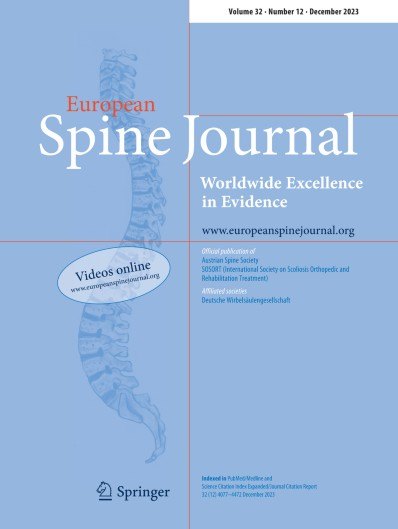
Various rehabilitation programs and no treatment comparable after spinal decompression

Various rehabilitation programs and no treatment comparable after spinal decompression
A randomised controlled trial of post-operative rehabilitation after surgical decompression of the lumbar spine
Eur Spine J. 2007 Aug;16(8):1101-17. Epub 2007 Jun 26Did you know you're eligible to earn 0.5 CME credits for reading this report? Click Here
Synopsis
167 patients with degenerative spinal disease (spinal stenosis/herniated disc) undergoing decompression surgery were randomized to either receive physiotherapy with stabilization exercises, physiotherapy with mixed techniques or no therapy/self management. The results indicated that both physiotherapy with spine stabilization exercises and physiotherapy with mixed techniques were not superior to advice to remain active with enjoyable activities (control).
Was the allocation sequence adequately generated?
Was allocation adequately concealed?
Blinding Treatment Providers: Was knowledge of the allocated interventions adequately prevented?
Blinding Outcome Assessors: Was knowledge of the allocated interventions adequately prevented?
Blinding Patients: Was knowledge of the allocated interventions adequately prevented?
Was loss to follow-up (missing outcome data) infrequent?
Are reports of the study free of suggestion of selective outcome reporting?
Were outcomes objective, patient-important and assessed in a manner to limit bias (ie. duplicate assessors, Independent assessors)?
Was the sample size sufficiently large to assure a balance of prognosis and sufficiently large number of outcome events?
Was investigator expertise/experience with both treatment and control techniques likely the same (ie.were criteria for surgeon participation/expertise provided)?
Yes = 1
Uncertain = 0.5
Not Relevant = 0
No = 0
The Reporting Criteria Assessment evaluates the transparency with which authors report the methodological and trial characteristics of the trial within the publication. The assessment is divided into five categories which are presented below.
2/4
Randomization
2/4
Outcome Measurements
4/4
Inclusion / Exclusion
4/4
Therapy Description
4/4
Statistics
Detsky AS, Naylor CD, O'Rourke K, McGeer AJ, L'Abbé KA. J Clin Epidemiol. 1992;45:255-65
The Fragility Index is a tool that aids in the interpretation of significant findings, providing a measure of strength for a result. The Fragility Index represents the number of consecutive events that need to be added to a dichotomous outcome to make the finding no longer significant. A small number represents a weaker finding and a large number represents a stronger finding.
Why was this study needed now?
Degenerative lumbar spine diseases that cause compression of the neural elements occur frequently in the ageing population. The symptoms and consequences that result from such diseases negatively impact the affected individual's ability to perform activities of daily living, and compromise their independence. Surgery is often required for these cases, and the success rates of surgery are reportedly low. The use of active rehabilitation programs following spinal surgery has proven to have benefits in younger patient populations, however it's use in elderly patients remains uncertain.
What was the principal research question?
How do the outcomes compare between no supervised therapy, physiotherapy with spine stabilization exercises, or physiotherapy with mixed techniques are performed following decompression surgery, in patients with degenerative spinal disease, measured over 2 years?
What were the important findings?
- Following surgery, a significant reduction (p<0.05) in the Roland Morris Disability Scores was observed, however there were no significant differences between the two groups (p>0.05). Between first (pre-rehab) and second (post-rehab) follow up periods, a further reduction in disability was observed with no significant differences between groups (p>0.05).No significant changes were observed up until the 24 month follow up period. (p>0.05)
- After surgery, both groups showed a significant reduction (p<0.05) in leg pain, back pain, and all average pain scores. Leg pain remained constant over the rehabilitation phase, but a significant increase (in all groups; each p<0.05) was observed from end of rehab to 12 month follow up. Until the 24 month period, leg pain was stable.
- At 2, 12 and 24 months after surgery, there were no significant differences between groups in terms of global outcome assessments (p>0.05).
What should I remember most?
In comparison to no therapy/self-management, supervised physiotherapy demonstrated no significant influence on the change in pain and disability scores, up to 24 months following surgery.
How will this affect the care of my patients?
Regardless of the therapy given, this study shows that patients still experience moderate disability in their every day life, resulting from back issues. Encouraging patients to continue with activities they enjoy doing, may be as effective as a supervised physiotherapy program- with low-cost to the health-care provider. Further large-scale, high-quality evidence is needed to validate these findings.
Learn about our AI Driven
High Impact Search Feature
Our AI driven High Impact metric calculates the impact an article will have by considering both the publishing journal and the content of the article itself. Built using the latest advances in natural language processing, OE High Impact predicts an article’s future number of citations better than impact factor alone.
Continue



 LOGIN
LOGIN

Join the Conversation
Please Login or Join to leave comments.